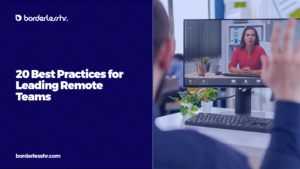In today’s fiercely competitive business landscape, talent acquisition has emerged as a critical function for organizations striving to stay ahead. It’s more than just filling vacant positions; it’s about strategically identifying, attracting, and retaining top talent to drive organizational success. This article delves into the intricacies of talent acquisition, exploring its definition, processes, challenges, and best practices.
Defining Talent Acquisition
Talent acquisition can be defined as the ongoing process of finding, attracting, assessing, and hiring skilled individuals to meet organizational needs. Unlike traditional recruitment, which focuses solely on filling immediate vacancies, talent acquisition adopts a holistic approach that aligns with long-term business objectives. It encompasses various stages, from workforce planning and sourcing to onboarding and beyond, with the ultimate goal of building a high-performing workforce.
Key Components of Talent Acquisition
1. Workforce Planning
Talent acquisition begins with understanding the organization’s current and future talent needs. This involves analyzing business objectives, forecasting skill requirements, and identifying gaps in the existing workforce. By aligning talent strategies with organizational goals, businesses can proactively address staffing needs and ensure scalability.
2. Sourcing
Once talent requirements are identified, the next step is sourcing candidates through multiple channels. This includes leveraging job boards, social media platforms, employee referrals, networking events, and talent databases. Effective sourcing strategies aim to attract diverse candidates with the right skills, experience, and cultural fit.
3. Candidate Screening and Assessment
Screening and assessing candidates are crucial steps in the talent acquisition process. This involves reviewing resumes, conducting interviews, administering assessments, and evaluating candidates against predetermined criteria. Behavioral assessments, technical tests, and competency-based interviews help ensure that candidates possess the necessary skills and qualifications.
4. Employer Branding
In today’s competitive job market, employer branding plays a significant role in attracting top talent. A strong employer brand communicates the organization’s values, culture, and reputation as an employer of choice. This can be achieved through consistent messaging, positive candidate experiences, employee testimonials, and engaging content across various channels.
5. Selection and Offer
Once suitable candidates are identified, the selection process begins. This involves final interviews, reference checks, and negotiation of employment terms. Offering competitive compensation packages, career advancement opportunities, and other incentives can help secure top talent and mitigate the risk of candidate attrition.
6. Onboarding and Integration
Successful talent acquisition extends beyond hiring to include effective onboarding and integration processes. Providing new hires with comprehensive orientation, training, and support fosters a smooth transition into the organization. It’s essential to facilitate connections with colleagues, clarify job expectations, and set clear goals to promote employee engagement and retention.
Challenges in Talent Acquisition
Despite its importance, talent acquisition poses several challenges for organizations:
Talent Shortages: In today’s skills-driven economy, many industries face talent shortages in critical areas. Finding candidates with the right skills and qualifications can be increasingly challenging, leading to prolonged recruitment cycles and increased competition for top talent.
Evolving Technology: The rapid evolution of technology has transformed the recruitment landscape, requiring organizations to adapt to new tools and platforms continually. From applicant tracking systems and AI-driven analytics to virtual interviews and remote onboarding, staying abreast of technological advancements is essential for effective talent acquisition.
Diversity and Inclusion: Building diverse and inclusive teams is a priority for many organizations, yet achieving meaningful diversity remains a challenge. Bias in recruitment processes, lack of diverse talent pipelines, and unconscious bias in decision-making can hinder efforts to create inclusive workplaces.
Employer Branding: Maintaining a positive employer brand requires ongoing effort and investment. Negative reviews, poor candidate experiences, or reputational issues can damage an organization’s employer brand, making it harder to attract top talent.
Candidate Experience: A positive candidate experience is crucial for attracting and retaining top talent. Lengthy application processes, lack of communication, and impersonal interactions can deter qualified candidates and tarnish the organization’s reputation.
Best Practices in Talent Acquisition
To overcome these challenges and optimize talent acquisition efforts, organizations can adopt the following best practices:
Develop a Comprehensive Talent Strategy: Align talent acquisition efforts with organizational goals and objectives to ensure a strategic approach to workforce planning and recruitment.
Embrace Technology: Leverage advanced recruiting technologies, such as AI-powered tools, data analytics, and automation, to streamline processes, improve efficiency, and enhance the candidate experience.
Cultivate Employer Brand: Invest in employer branding initiatives to showcase the organization’s values, culture, and commitment to employee development and well-being.
Foster Diversity and Inclusion: Implement diversity and inclusion initiatives across all stages of the talent acquisition process to attract diverse candidates and create an inclusive workplace culture.
Prioritize Candidate Experience: Provide a seamless and personalized candidate experience by streamlining application processes, maintaining open communication, and offering timely feedback.
Talent Acquisition vs. Recruitment
When we talk about recruitment, we’re talking about filling up job openings right away. This means putting up job ads, looking at resumes, interviewing people, and choosing someone to fill a specific role. recruitment is all about getting the right people in quickly so the work can keep going.
Now, talent acquisition is a bit different. It’s more about planning for the future. Talent finding is like looking ahead and figuring out what kind of people we’ll need in our team down the line. It’s not just about filling a job; it’s about thinking long-term and getting the best people for our team.
When you search for talents, think about what skills you’ll need and how many people you’ll need in the future. Also, think about what makes your company a good place to work. This is called employer branding. It’s about showing people why they should work for you.
Another big part of talent acquisition is keeping in touch with people, even if you don’t have a job for them right now. It’s called building a relationship. By staying connected with talented people, you can ask them to join your team when the time is right.
So, in simple terms, recruitment is like filling a job quickly, while talent acquisition is more about planning for the future and making sure you have the best people on your team. By understanding the difference, you can make sure you’re ready for whatever comes your way in the working world.
Conclusion
Talent acquisition is more than just a transactional process; it’s a strategic imperative for organizations seeking to build high-performing teams and gain a competitive edge. By embracing best practices, overcoming challenges, and prioritizing candidate experience, businesses can effectively attract, assess, and retain top talent to drive long-term success.
In an ever-evolving business landscape, talent acquisition remains a cornerstone of organizational success, shaping the future of work and driving innovation and growth.







